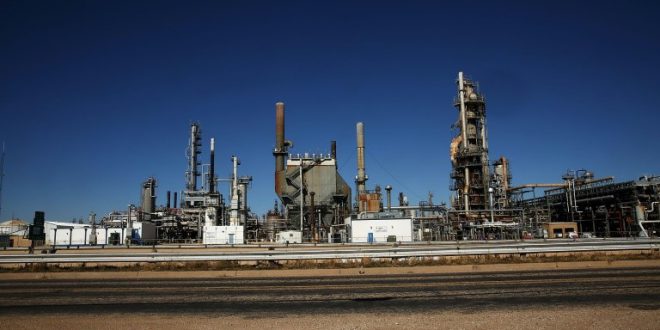The Trump administration’s campaign to pressure Iran is gaining momentum. as China — Tehran’s biggest oil customer and a supporter of the 2015 nuclear deal — announced it has dramatically cut purchases from Iran and boosted oil imports from the U.S..
With the U.S. preparing to reimpose sanctions on Tehran’s energy sector early next week. China’s General Administration of Customs on Thursday posted data showing that purchases of Iranian crude oil for September were down 34 percent from September 2017.
The latest figures from Beijing gave a boost to President Trump’s campaign to squeeze Iran’s economy after pulling out of the 2015 nuclear deal this spring. China and other signatories to the pact — Russia. Britain. France. Germany and the European Union — have been desperately seeking to preserve financial and commercial ties to Iran without falling afoul of the expansive new U.S. sanctions.
The Trump administration has said it wants to drive Iran’s exports down to “zero.“ but has also signaled in recent days it is willing to give allies such as India and South Korea a waiver giving them more time to find alternative energy sources.
Chinese customs officials reported this week that U.S. oil imports from January to September this year are up about 150 percent from the same time period last year. That spike comes despite an intensifying U.S.-China trade war that has affected many other markets in the bilateral relationship.
Recent sales data suggest that Asian buyers are easing off importing Iranian crude ahead of the Nov. 5 sanction deadline set by the U.S. administration. The Trump administration in May gave Iran’s oil customers 180 days to wind down purchases of Iranian crude.
Iran is the third-largest producer in the Organization of the Petroleum Exporting Countries (OPEC) and the sanctions will directly target countries that buy oil from it by blocking them from access to U.S. markets and financial institutions. Among Iran’s biggest customers are China. India. Turkey and South Korea.
Many have requested a waiver from the White House to allow them to ease slowly off Iranian crude. similar to provisions granted by the Obama administration when it sanctioned Iranian oil before the 2015 deal was struck. Indian officials say they have cut Iranian oil imports by 30 percent over the past several months in a bid to qualify for a waiver from the Trump administration. the Times of India reported.
Earlier this week. National Security Adviser John R. Bolton acknowledged the difficulty some countries are facing. and said the U.S. does not want to harm allied countries that depend on Iranian sources.
Bloomberg reported Thursday that India and South have tentatively secured waivers to would allow them to continue importing at least some Iranian oil.
While the report cited anonymous sources and no final announcements came from Washington. New Delhi or Seoul analysts did note that the possibility of waivers would help calm nervous global oil markets which were bracing for a supply slump if Iranian oil suddenly stopped being sold next week.
With voters reading for next week’s midterm elections the Trump administration has been closely watching the price of gas at U.S. pumps and attempting to balance that with its pressure campaign on Tehran.
U.S.. Indian and South Korean officials on Thursday did not comment on the reported waivers.
Also on Thursday. U.S. energy officials announced a milestone: Due largely to the fracking phenomenon. the U.S. is now the world’s No. 1 crude oil producer. surpassing Russia.
The Energy Information Administration said Thursday that the U.S. produced more than 11.3 million barrels a day in August. a 4 percent increase over the old record set in July. Russia’s energy ministry estimates that country pumped 11.2 million barrels a day in August. OPEC reports Saudi Arabia pumped 10.4 million barrels a day.
It’s the first time since 1973 that the U.S. leads the world in oil production. the EIA said.
 Iran Energy News Oil, Gas, Petrochemical and Energy Field Specialized Channel
Iran Energy News Oil, Gas, Petrochemical and Energy Field Specialized Channel




